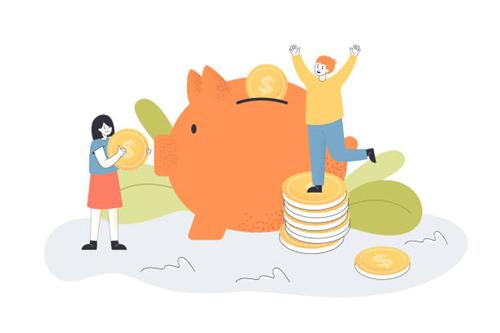Teaching Teens About Crypto: Risks vs. Rewards

In recent years, Bitcoin and other cryptocurrencies have rapidly gained popularity, becoming some of the hottest topics across the internet, social media, and the investment world. As the first successfully operating decentralized electronic cash system, Bitcoin has not only disrupted the traditional financial system but also reshaped how we perceive “money,” “wealth,” and even “power structures.” For teenagers who have grown up immersed in the digital world, the allure of this groundbreaking technology is almost irresistible.
Statistics show that individuals aged 18 to 24 make up the majority of crypto users, accounting for over 60%. This age group is naturally curious about new technologies and trends. Concepts like decentralization, anonymity, and security resonate strongly with young people’s values of freedom, independence, and privacy. However, while crypto may seem full of opportunities, it comes with complex and high-stakes risks that can’t be ignored.
Why Teach Teens About Cryptocurrency?
First and foremost, cryptocurrency is not simply a shortcut to getting rich—it represents a revolution in digital finance and technology. The blockchain technology behind it is already being widely adopted across industries: from financial payments and logistics to medical data storage and decentralized application development. These emerging trends are not just reshaping economic models—they may also influence future job markets and lifestyles.
With the rise of social media, crypto content has broken out of the investment bubble and entered mainstream culture. Influencers, bloggers, and even celebrities often post about their holdings and massive gains, creating a form of word-of-mouth marketing that easily sparks fantasies of “getting rich overnight” among teens.
But teenagers are still developing their values, judgment, and decision-making skills. Following trends blindly could lead to serious consequences. That’s why before they get involved in crypto, they must first learn how to view the technology itself with a critical eye.
The “Potential Rewards” Teens Should Understand
1. Tech Literacy for the Future
By studying how major cryptocurrencies like Bitcoin and Ethereum work, teens can explore cutting-edge technologies such as blockchain, smart contracts, and distributed ledger systems. These aren't just theoretical concepts—they're actively shaping how the world operates.
2. Understanding the Nature of Finance
Practicing with simulated investments or virtual trading platforms can help teens learn how to read market trends, manage risk, and develop investment strategies. It's a much more engaging and practical way to understand economics than textbooks alone.
3. Developing Critical Thinking
Learning about these technologies builds logical thinking, analytical skills, and innovation—essential tools for navigating an ever-evolving world.
4. Exploring New Career Paths
Despite its risks, the crypto market can present real opportunities. For some teens, it could even open doors to future careers in blockchain development, cybersecurity, or digital finance.
The Risks That Can’t Be Ignored
1. Extreme Volatility
Crypto prices are much more volatile than traditional assets. It's common to see prices rise or fall by 20%—even 50%—in a single day. Many beginners buy at peaks driven by hype, only to suffer huge losses when the market turns.
2. Unreliable Platforms
Several cryptocurrency exchanges have been hacked, shut down, or “disappeared” with user funds. Smaller platforms are particularly risky and often offer little recourse if things go wrong.
3. Scams Are Everywhere
From fake airdrops and phishing scams to Ponzi schemes promising high returns, the crypto world is full of traps. Teens, lacking experience and skepticism, are especially vulnerable.
4. Emotional Toll
The highs and lows of crypto can have a heavy psychological impact. Greed in bull markets and despair in bear markets can lead to anxiety and stress, particularly for younger, emotionally developing individuals.
5. Legal and Ethical Risks
In May 2025, a teen-involved kidnapping case involving cryptocurrency made headlines. The perpetrators used social media to demand Bitcoin as ransom and were ultimately arrested for kidnapping and extortion. This case highlighted the dangers of misusing crypto’s anonymous nature and the teens’ lack of legal awareness.
This incident served as a wake-up call and sparked renewed discussion about crypto regulation. While anonymity and decentralization are technical strengths, they also make crypto attractive for illicit activity. It’s a reminder that technology can empower or harm—depending on how it's used.
How to Guide Teens Toward Responsible Crypto Awareness
- Start With the Tech, Not the Tokens
Encourage teens to explore the underlying technology through blockchain experiments or trading simulations. Help them understand the system rather than chase profits.
- Promote Open Communication at Home
Parents don’t need to be crypto experts, but keeping an open mind and discussing financial news can help teens develop media literacy and a critical eye for scams and misinformation.
- Build Educational Frameworks
Schools and extracurricular programs should introduce digital finance literacy, helping teens develop risk awareness and a basic understanding of legal and ethical issues before entering the real world.
- Empowerment Over Control
Education should empower teens to think independently—not just keep them away from risks. In the digital age, shielding them isn’t as effective as preparing them.
Cryptocurrency isn’t inherently dangerous or magical—it’s a tool. It represents both the incredible potential of emerging technology and the serious consequences of its misuse. When educating teens, we shouldn’t focus on banning or restricting them from learning about crypto. Instead, we should guide them to understand the technology, think critically, and act responsibly.
In the era of digital finance, true wealth lies in rationality and risk awareness—not just market gains.
Recommended for you:







